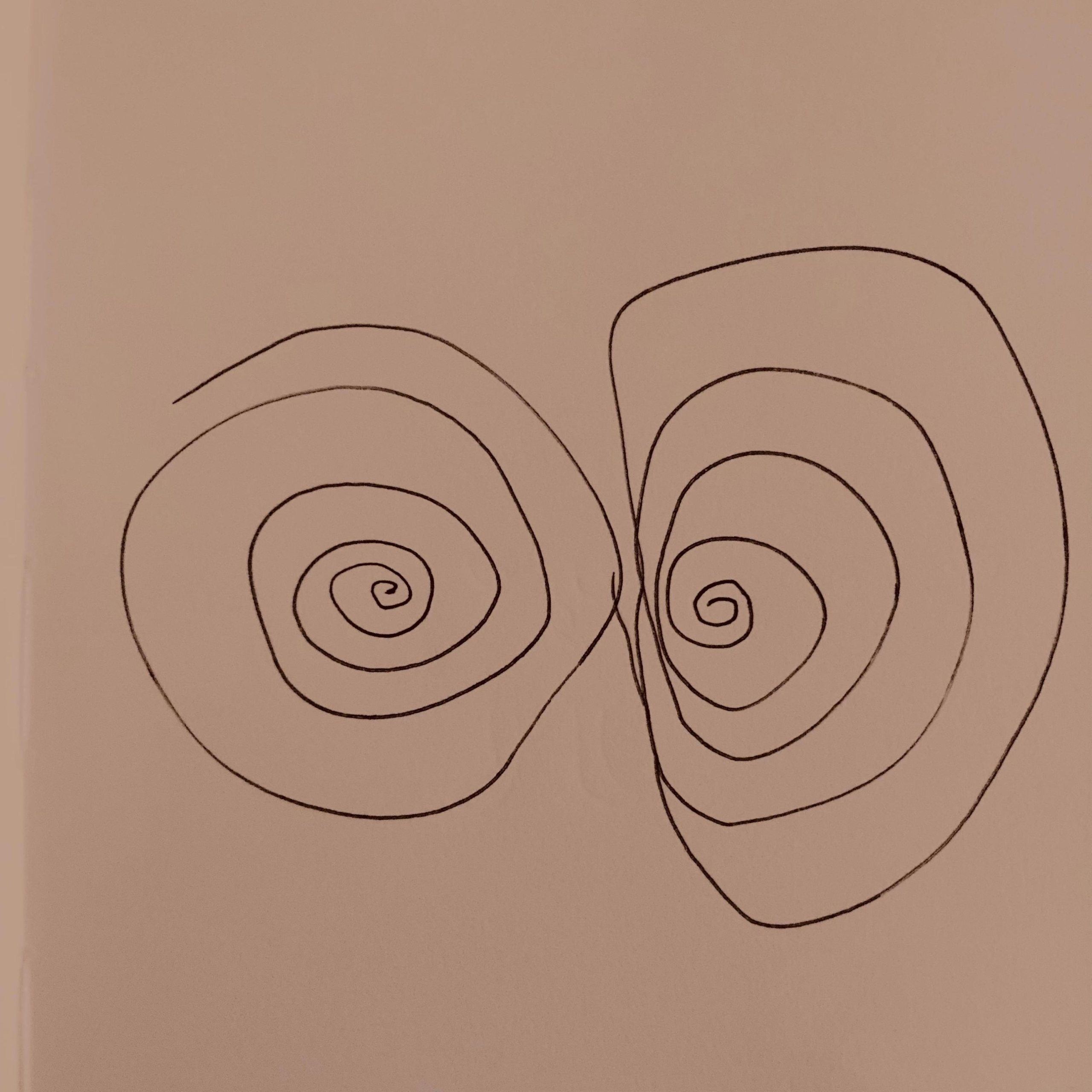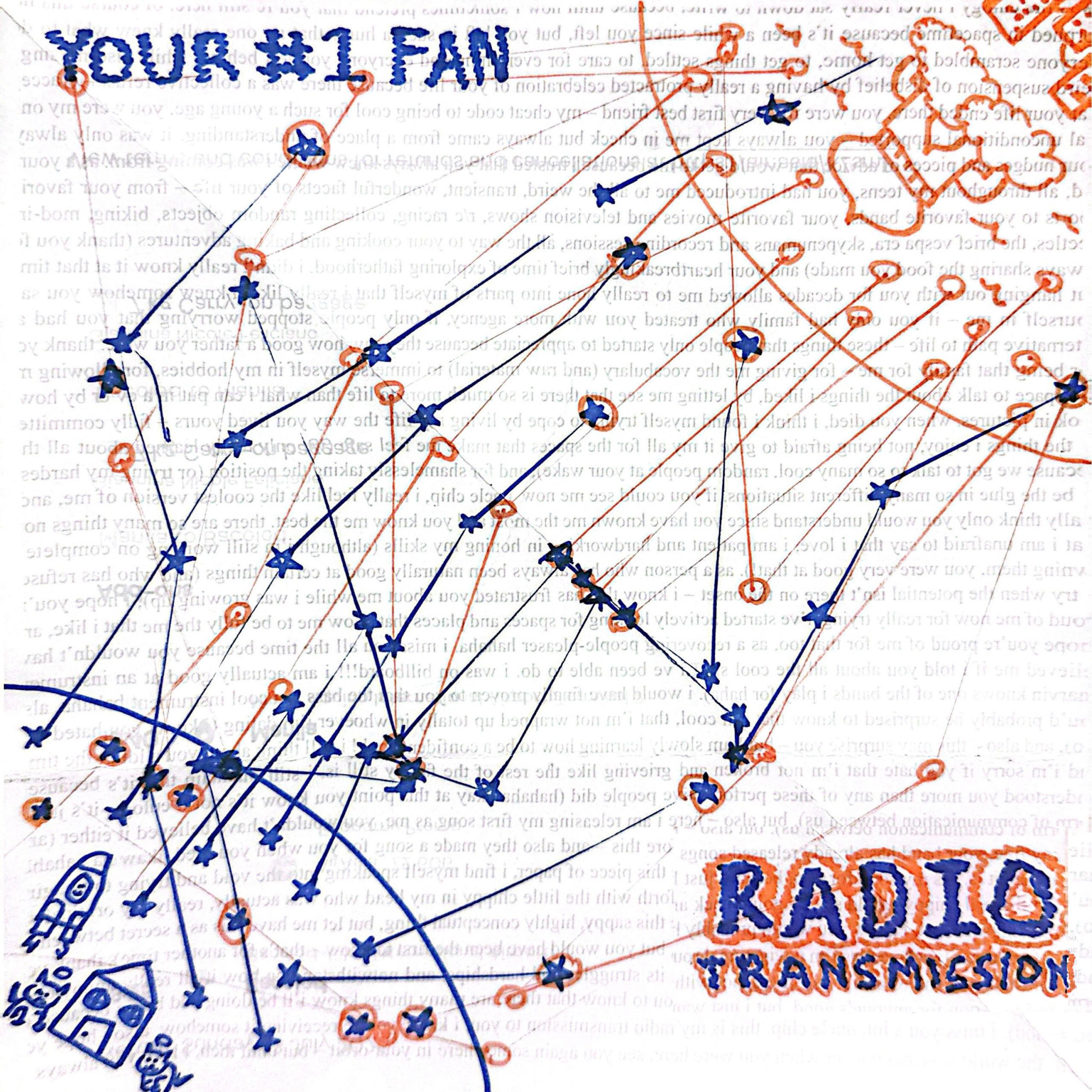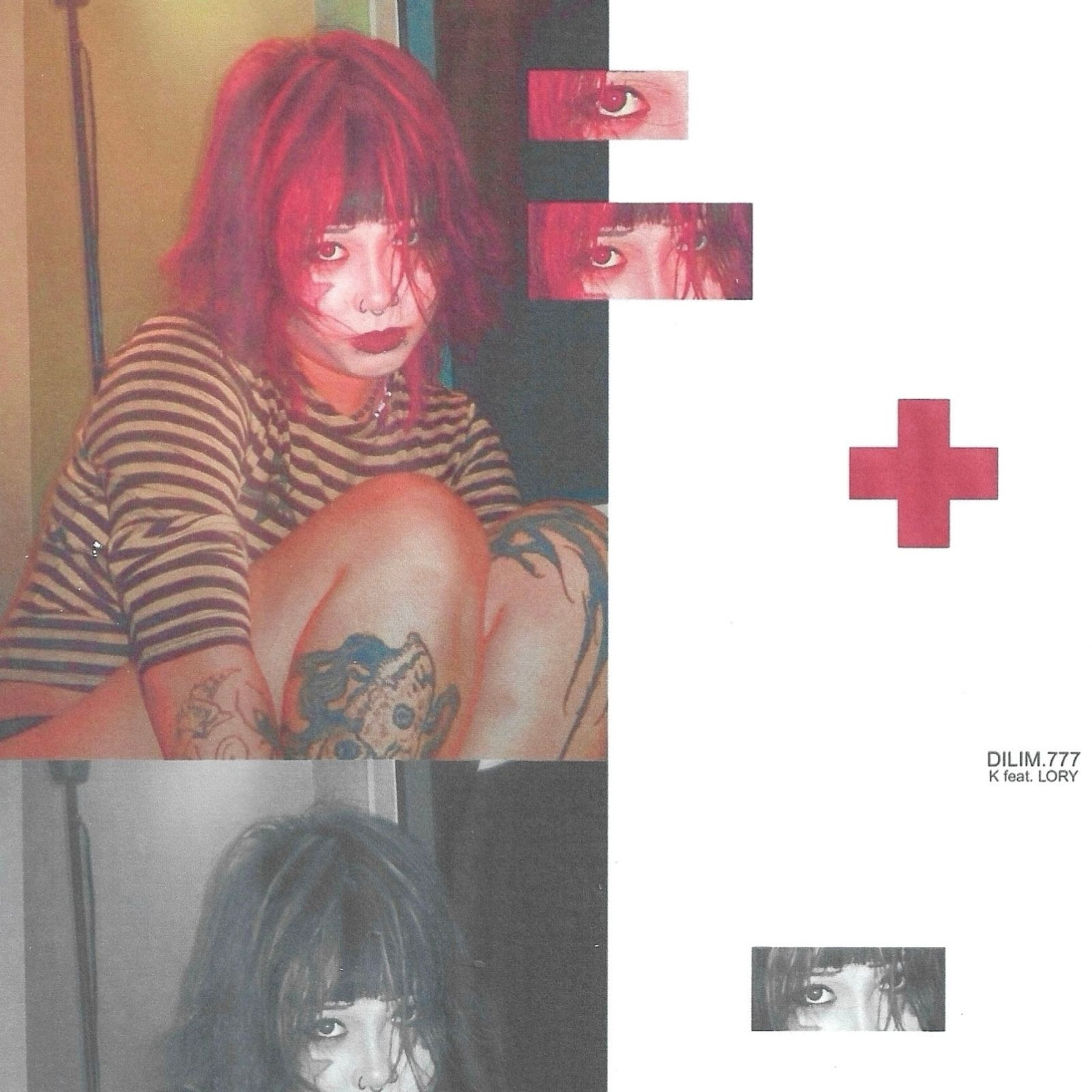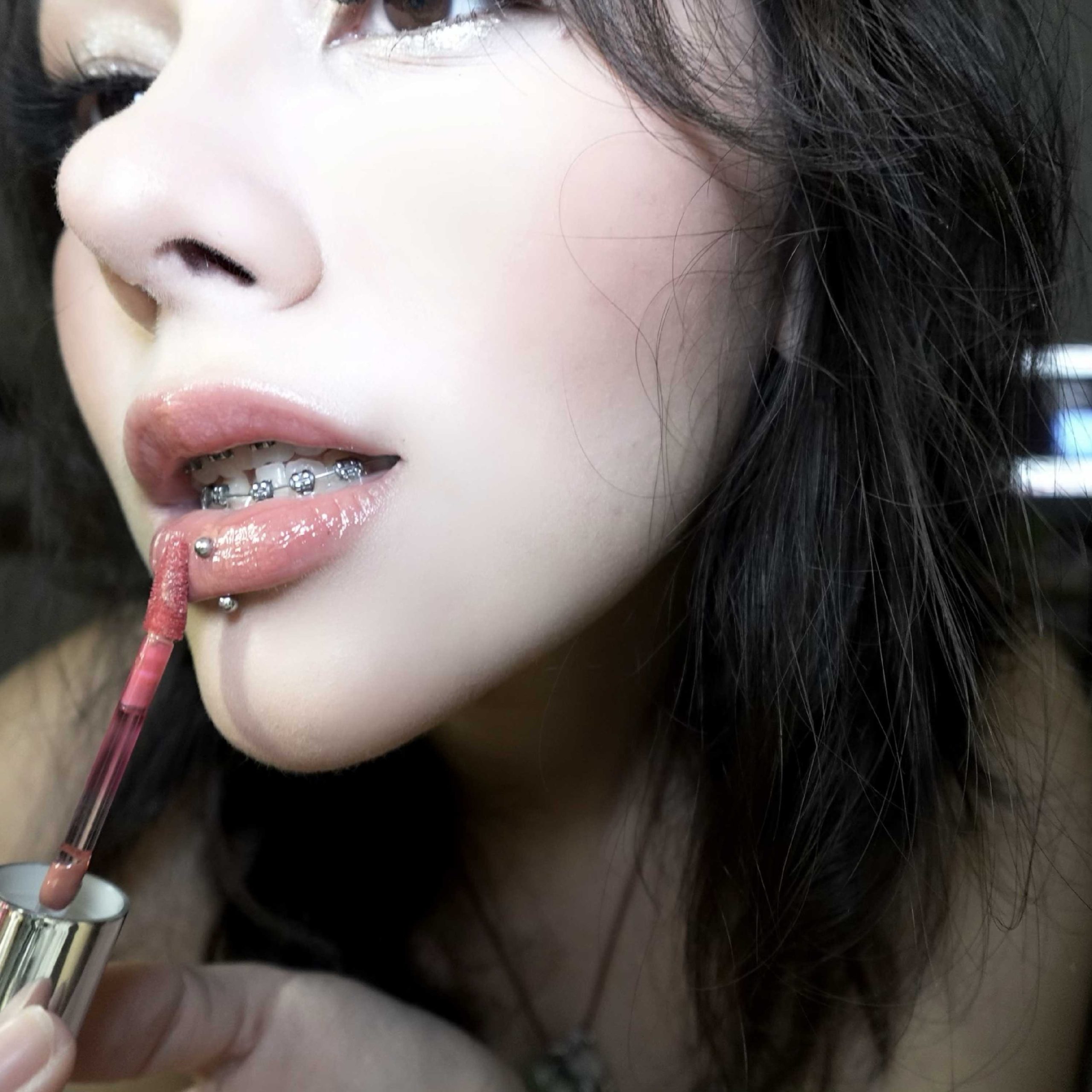Written by Louis Pelingen In every new song that Gabriel Lazaro puts out, there is a drift that pulls him into a sandstorm. His hand at experimental jazz and rock continues to be tested at every turn. “Slam dance” is no different, as all the galloping drums and layers of ragged acoustics and electric guitars build towards a melodic crescendo that explodes, and eventually breaks off into a wall of gentle vocals that repeats their soft mantra. Besides the warping progression it creates, Gabriel Lazaro does not get subsumed, more so, keeps his foot on the ground as his raw tone provides a chilling command within the conversational poetry. Singing like a preacher, spreading absolute knowledge to those who will hear. Telling the listener to go through various changes and decisions, one that will set them free from the evils that they hide within themselves. For all that buildup, “Slam Dance” still feels like a part of Gabriel Lazaro’s journey in terms of truly landing the sound and mood that he’s been trying to craft for himself, where his direction with his compositions and intensity keeps wandering rather than truly hitting its mark. It’s a song that stumbles on pulling off its chaotic and serene dance, but does provide a semblance of hope towards getting close to a slam dunk. Support the art and the artist:
Category: TRACKS
TRACK REVIEW: SAINT LAWRENCE – SO U
Written by JK Caray Sometimes, The Best Thing Ever™ disguises itself as something arbitrary. In the case of SAINT LAWRENCE, his debut track “SO U” first came from that familiar itch of needing to create something, despite all limitations. Made out of a awkwardly tuned guitar, a catchy hook, and the feeling of losing your spark, “SO U” is a song about burnout that ironically helped its writer avoid burning out. Right from the start, nothing could prepare you for the intense wave of emotions. The eclectic drum patterns and rigid glitches convey a sense of helplessness, being bitter at one’s predicament. The production is flawless for a debut track, with little elements like the occasional glitch adding to the steely vibe. Here, SAINT LAWRENCE’s performance is brooding yet intimate, carefully alternating between soft whispers and screaming with all the guts he can muster. Each detail builds into a satisfying breakdown that washes everything along with it. It’s a once-in-a-blue-moon moment whenever an upcoming artist defines precisely what they want to do with their music, but it’s as if the stars aligned for SAINT LAWRENCE, given how polished his craft is. “SO U” not only provides a backdrop of what’s to come, it shoves you headfirst into the mayhem that is SAINT LAWRENCE. Support the art & the artist:
TRACK REVIEW: MISTER MEYERS – LAYUAN MO NA AKO
Written by Jax Figarola MISTER MEYERS’ “LAYUAN MO NA AKO” is a heartbreak spiral. Compared to the glitchy, melodic sprawl of his hip-hop mixtape last year called Meister Eyres, this latest track keeps his signature eclecticism, but punctuates it with heavier percussion and a more confrontational edge. And just like his previous works, he scores his emotional distress with a soundbite from a pop culture ephemera: a Raffy Tulfo interview. The flow is magnetic and the rhymes are slick, sure, but there’s an uneasy flattening of the woman in question. The woman in question is a hollow characterization that leans into the cliché of the manipulative ex-girlfriend without interrogating the trope. It positions her as a moralistic foil, a one-dimensional saboteur in the story of his downfall. Her presence is merely symbolic for him to contrast his own fragility and effort. What makes it worse is how intentional the framing feels, how the song relishes in the act of blaming her, while dramatizing the wounds he claims to carry. Additionally, from any angle, it feels unlikable to posture and dismissively insinuate the woman as stupid. One of the lines in the chorus evokes a common trope in rap: that a woman’s inability to “get” a man justifies cutting her off. It’s reductive, but here, it’s delivered with such naked petulance that it becomes pitiful. Still questionable, but probably the least violent expression of the trope we’ve seen in Filipino rap in recent years. Then again, to give the benefit of the doubt, maybe that’s just what really happened. MISTER MEYERS might just be speaking from a place of hurt that hasn’t had the language to process itself with care. He sketches a masculine persona caught between ego and exhaustion, desperately trying to reassert control over his emotions as a man who was done dirty. Moreover, the effort to list sacrifices becomes a coping mechanism, rather than a flex, if juxtaposed to the rest of the song. If read this way, the song becomes less of an attack, and more of a portrait of someone performing strength in his own way. Nevertheless, it’s always a risk when narratives like this regarding women circulate. In Filipino rap, they can normalize certain emotional patterns as justified without being questioned. Still, “LAYUAN MO NA AKO” thrives as a track because of its production. It’s very hard to resist the theatricality of this bass-heavy bravado and the way the hook wriggles into your brain until you’re singing and feeling the masculine persona. Sonically, it’s just fun. It’s the kind of feel-good track tailor-made for those who’ve had their own crazy ex-girlfriend moment and just want to scream “bitch, teka lang!” Regardless of its lyrics, the track is undeniably a guilty pleasure with its impressive production. SUPPORT THE ART & THE ARTIST:
TRACK REVIEW: Your #1 Fan – Radio Transmission
Written by Gabriel Bagahansol Every artist starts out as a fan. You get exposed to all the ways people express themselves and enjoy it so much that you’d want to take a shot at it yourself. So just as the name “Your #1 Fan” suggests, Nica Feliciano started out living and breathing music – frequenting gigs in the underground music scene; playing bass guitar for bands such as Bird Dens, Thirds, and The Purest Blue; and even putting up her own indie rock shows. It was inevitable that Your #1 Fan would eventually be expanded into a music project; that time has come with the release of her debut single, “Radio Transmission.” The wonder and curiosity of being a fan is manifested in the music and lyrical themes of this song, a space rock ballad that sails like a probe traversing the cosmos. But the story remains mostly within the Earth’s atmosphere: here, Nica longs to make contact with somebody she loves who’s in another part of the world, wanting to know whether there’s a place for her in their heart even though they’re so far apart. The imagery of satellite communication courses through these lyrics, as it does in the music, with beeps and pulses that sound like incoming signals peppered throughout the song, which plays at a tempo meant to relive the grandeur of space travel. However, the song picks up speed halfway through as Nica begins to blur the boundaries between the vast distance of two lovers on opposite sides of the Earth and our collective smallness within the universe. It no longer matters that life means we’re all tiny figures tethered to an ultimately tiny place: as long as she makes contact with the one she loves, the concept of dimensions just fades away. Whenever we define ourselves with the celestial bodies, we often look to the Moon and its chase towards the Sun, or our relation with the stars, or even the depth of the unknown. Therefore, to hear an exploration on the celestial bodies we ourselves have created, and how we used our discoveries of outer space to bring us closer to one another no matter where we are in the world, is refreshing for once. Which brings us back to the cyclical nature of the making of an artist: we take what we find in the artists that we love and make something from that for ourselves. With “Radio Transmission,” Your #1 Fan has successfully taken that one small step as an artist, and as Nica continues to release more music and plays more shows with this project, people can certainly look forward to the great leaps ahead. Who knows? You could become Your #1 Fan’s no. 1 fan. SUPPORT THE ART AND THE ARTIST:
TRACK REVIEW: VVINK – Tulala
Written by Noelle Alarcon Filipino production house FlipMusic is known for being the genius behind some of the hottest OPM tunes, may it be Ron Henley and Pow Chavez’s bouncy rap song “Biglang Liko,” or even Nica del Rosario’s politically motivated serenade “Rosas.” In this current era that’s experiencing an influx of Pinoy Pop groups debuting left and right, from the easygoing AJAA to the versatile KAIA, it’s no surprise that FlipMusic has played a part in steering the direction of P-Pop’s sound. They’ve gained plenty of praise for mastering the recipe of bubblegum pop–after all, they are the masterminds behind some of BINI’s most beloved hits, such as “Pantropiko” and “Salamin, Salamin.” Taking a step further in pushing P-Pop to greater heights, FlipMusic debuted its own girl group, VVINK, with the release of their debut single, “Tulala,” on July 10. It’s evident that P-Pop is influenced by the sounds of the Hallyu Wave, and FlipMusic skillfully takes from K-Pop’s “a little bit of this, a little bit of that” approach, where the music acts as an auditory stage. It’s a playing field that focuses on showcasing the idols’ learned prowess, honed by their dedication to training. In the three minutes and 26 seconds of the song, its simple yet carefully constructed structure showcases the talent and charisma possessed by the five girls of VVINK. The synths that open the song catch your attention, pulsing and full of energy, matching the explosive vocals of the members. What about a bouncy rap part immediately greeting you in the second verse? An impactful bass drop for a dance break? Truly, VVINK makes the most out of “Tulala’s” runtime, sonically putting out all of their strengths for the budding fan to admire. Make no mistake, despite the different ways “Tulala” pulls from its many influences, it is purely and thoroughly P-Pop, from start to finish. In the various ways the girls project their voices, you can’t help but hear the bubblegum pop roots that were planted over a decade ago. They’re a little coy, a little sincere, and a little fierce, carrying the torch passed onto them by the discographies of artists like Nadine Lustre and Donnalyn Bartolome. With an addictive bassline and a mesmerizing guitar solo added into the mix, FlipMusic’s extensive understanding of pop music truly shows. Of course, VVINK covers all the bases. “Tulala” also bears the standard pop music cheesiness of its ancestors–the way its lyrics fall off the girls’ tongues makes it an easy earworm. “Ano ba ‘tong ang diyahe?” They sing with earnestness, followed by their collective “OMG” in the background, full of life and ‘kilig.’ They even came prepared with word play: “If I’m your lady, I’ll go ga-ga, your baby goo-goo, ga-ga.” From the onomatopoeias to the expressions of a pounding heart, VVINK recalls the feeling of having a schoolgirl crush with ease. Understanding what makes pop music pop is a skill, and FlipMusic’s capability to do so has granted them the ability to make music that captivates the ears of Filipinos all over the nation. It’s exciting to see the places VVINK will go and how their talents will help in shaping the sonic landscape of P-Pop.
TRACK REVIEW: K – Dilim (feat. LORY)
Written by Anika Maculangan After releasing her debut EP Gabi ng Lagim in 2024, K follows up with her first collaboration, “Dilim,” a single featuring LORY. In the track, what emerges is less a duet and more a convergence; two voices moving through the same storm, not hand in hand, but aware of each other’s shadows. The track doesn’t open the door gently; it surges into the room. From the first downstroke, its intent is not to be misunderstood, but rather, to dislodge, to engulf, and to hum beneath the flesh like a second skin. “Dilim” feels like reading a letter written in a language you once knew, every line familiar but just out of reach, each word flickering at the edge of meaning. The guitars churn like static caught between radio frequencies, and the drums tick forward with the cold precision of a dying clock. K doesn’t sing, she pries sound out of her sternum, each note arriving cracked, as if it’s already lived through the pain it’s meant to express. LORY, whispered but no less real, dances upon the spaces between, like smoke tracing the lines in a windowpane. The track is not linear; it sways, it plunges, it crests in unsymmetrical waves. There is a studied vagueness to it, as though the track had been constructed underwater, under silt and memory. Emotion rises like steam, hot and ephemeral, but the form never coagulates. It’s a song more sensed than taped; held together by mood, not motion. There’s beauty in that blur, and restlessness. The weight is there, yes, but where is it? The track hangs on without completely falling apart. Despite all its weight, there’s a feeling of something withheld, not due to mystery, but restraint. A tremor that doesn’t end in collision. But to define “Dilim” in what it does not have would be inaccurate. There is clarity in its ambiguity, there is comfort as well. Something does not always have to come in whole or in its entirety. Some music is scaffolding; empty frameworks where people superimpose their own ruin, their own fixing. “Dilim” does that. It does not thrust sorrow onto the stage, but offers it. It doesn’t demand anything of its listeners, but allows for them to make the song their own, whichever shape it morphs into, depending on its beholder. And perhaps that is its goal; not to enlighten, but to resonate. Not to answer, but to ring true. The sort of song that doesn’t speak at you but to you. SUPPORT THE ART & THE ARTIST:
TRACK REVIEW: BABY FREEZE – LIL ICE
Written by Faye Allego In scorching hot weather and immense humidity, stepping outside the house feels like it’s destined to sizzle your skin. That isn’t the case for Baby Freeze’s new single, “LIL ICE.” Maybe she’s gifted. Maybe it’s Never Paco’s mixing and mastering. Or maybe she knows how to make a bop that’s simple, fun, and well-witted. Produced by NOIR and wearing eyeshadow that screams a metallic Dior shear meets Re-l Mayer from Ergo Proxy in the track cover art, Baby Freeze not only turns daily affirmations into a catchy tune with her latest track, but coldly presses two questions: are short-form, Y2K-inspired tracks just a nostalgic trend, or can it carve into its own genre? And is it still transgressive when a woman who is unapologetically herself wants the drop bars about owning her own starpower? “LIL ICE” is a fresh example of balancing intuitive songwriting with dance floor appeal; while lots of short electronic hip-hop anthems come to a staggering halt just as the singer is about to reach a lawful bridge, Baby Freeze heatedly affirms the repeat button because every bar like “front row seat and they all fall in line/ and they causin’ a commotion every time they see me smile” bites back without any need for an extension. Perhaps overthinking is unaffiliated with her. Anything a woman raps about that even has a droplet of braggadocio is automatically subject to being labelled as polemic writing. “LIL ICE” is a clapback or a breezy self-affirmation anthem; her carelessness about being a spectacle of negativity reflects the hater and not her talent. An inkling of risk arises as the track fits into the genre of speedy songs masked with the early 2000s cyber aesthetic; the risk of blending in with the influx of this popular happenstance might cause her talent to go unnoticed. SUPPORT THE ART & THE ARTIST:
TRACK REVIEW: Gaspari – KODAK BLU
Written by Lex Celera Gaspari, (also known as Gaspari 777) of Greenhouse Records has quietly become the go-to producer for GHR artists like Sica, SUPAFLY, and Gat Putch, while also gaining traction in wider hip-hop circles through collaborations with NIO, Yuridope, and Lexus. In a 2023 event to promote their upcoming album, Lexus of OWFUCK, hands on his chest, proclaimed Gaspari as one of his top music producers of choice: Then a relative unknown, he produced several track in the rap group’s EP ACIDIC, including the eponymous lead single. By 2024, Gaspari’s name carried more weight, most notably in Gat Putch’s “Crazy” featuring Sica, of which he has production, mixing, and mastering credits. Gaspari’s increased visibility wasn’t as much of a meteoric rise as it was a silent encroachment, racking up credits in some of Philippine hip-hop’s brightest and loudest in the past few years. Upon looking at his discography pre-Greenhouse Records, the Filipino-Italian producer began his career as a rapper as well, with one of his singles from this previous era still publicly available on his YouTube channel. It’s unclear which of the two came first, but 2025 marked his resurgence as a listed emcee with SUPAFLY’s “Puff Me Up,” Buddahbeads’ “Rollin,” and two of Gaspari’s own “BLOCKA FREESTYLE.” This resurgence pushed Gaspari into the limelight, and with it, a unique style that has become emblematic of his recent work: Punchy delivery and simple, catchy rhyme drowned out in a drowsy, effervescent voice. Out of his current discography, Gaspari shines the most in his solo track “KODAK BLU.” Twinkling piano-like melodies layered on a sparse production of synths, 808s, and percussion form a tantalizing instrumental where Gaspari’s viscous flow sticks out. The repetition of the already catchy hook allows “KODAK BLU” to borrow not just from the contemporary hip-hop playbook but also from the so-called algorithm-latching habits of music today. The same delivery, themes, and lyrics can be seen in his short recent discography; Beyond changes in beats and collaborators, his music struggles to offer variety. Maybe it is the hip-hop artist’s role to create and release permutations of its best qualities to see what sticks, and then abide by it until it wears itself off. By these ends, “KODAK BLU” emerges as the stickiest and most compelling out of Gaspari’s recent verses. But what’s most interesting about “KODAK BLU” is its title: a nod to Atlanta rapper Kodak Black. In mentioning his name in the title, Gaspari drives the connection between his own body of work and Kodak Black’s apparent. “KODAK BLU” is not an attempt to adapt Kodak Black’s persona to tell a story. There are kernels within the formula he works with that can feel uniquely his, especially as he tries out different flows in the second verse. Is Gaspari innovating or just borrowing? Both can be true. Hip-hop has always been a genre that thrives on its references, either through interpolation, sampling, or borrowing lines. And if Cardi B can make “No Flockin” into her very own “Bodak Yellow,” there’s space for Gaspari to conjure up the same formula and make it his own. Time will tell if he will wear out his welcome under the trappings he has made for himself in past months. “KODAK BLU,” meanwhile, is his foot in the door to possibly bigger and greater things – granted that he choose to mutate, instead of just permutate. Support the art and the artist:
TRACK REVIEW: Jiji – Paborito
Written by Louis Pelingen At first glance, “Paborito” might seem like a sweetly tuned love song, where Jiji carries so much twinkling charm in her vocals. Softly cooing with an effortless grace that never takes away the listener’s attention, as the pluggnb beat carries enough bubbly texture from the glistening synths and the 808 beats that keep the atmosphere more joyous. She allows the catchy set of melodies to shimmer, all with a wink and a grin. But take a closer look, and some layers manage to peer through in the writing. Beneath this fluttering tune is a casual relationship that eventually has to end, where despite the wholesome moments being shared and the pure trust that’s being made in each other, Jiji knows that she’s not exactly prepared to really commit. Eventually ending the song with direct communication, cutting the relationship with no ill will on either person’s side. Musically pleasant and lyrically tender, “Paborito” is a song that gently leads to a decision that never takes away the special moments that were made in the relationship. Filling the glossy atmosphere with a sweetness that’ll stay for a long time. Even after the relationship has ended, the charming memories that were made will continue to be a favorite in Jiji’s heart. Support the art and the artist:
TRACK REVIEW: MoonDream City – Road Song
Written by Louis Pelingen Let’s all be blunt: there’s nothing wrong when pop-rock band MoonDream City starts embracing experimentation and throwing a ridiculous number of ideas at the wall. In order to eventually find artistic growth, it’s always a good thing for an artist to just test the waters in whatever genre or style shift they’re trying to approach and go from there, where eventually, they’ll be able to find some focus after trying whatever diversion they’re digging into. Experimentation could either be a hit or a miss. It could be successful or novel. There’s no in between. This eventually extends to how an act markets a shift in their sound that doesn’t always mean it’s bound to be the next “new genre,” an intriguing observation in forming a unique distinction amongst their contemporaries, even if this marketing trick will be a double-edged sword. Garnering the reactions that they might want, but not exactly the ones they’ll need long-term. These observations are relevant to Bon Jubert and Muntinlupa Jazzcore Society, acts that operate under the recently coined “ebascore”, a newly formed sound that loosely combines socially aware themes alongside jazz, funk, metal, and spoken poetry elements, then displays all of them with novelty and flashiness. MoonDream City’s ‘Road Song’ is a recent addition to this, throwing away their pop-rock instincts and replacing them with intense vocal shouts that toss between nu-metal, jazz, and funk grooves. On the basis of the finesse and volume alone, the song definitely pulls the listener into the whirling chaos that the band brings to the surface. A brief enough tune that unleashes emotional wallow and technical verve, but doesn’t exactly do much more with the compositions. Serving as a direction that brings the band to something new, but with the way the song is promoted paired with the hollowness of “ebascore”, the track falls apart really fast. What fails with the band’s attempt for their stylistic shift is twofold: one is the social commentary that’s given with vague winks, relying upon shouty complaints rather than precisely delving deeper into what made commuting such a hellscape for everyone. It may unleash those enraged emotions, yet their observation feels short-sighted and individualistic. Focusing a lot more on losing one’s beep card, switching from another FX, waiting for a less crowded jeepney, and lacking change to pay for a trike. A presentation of everyday occurrences that don’t offer much depth about the issue being discussed. But the more concerning issue is the flashy presentation that shrinks the execution to a mush. Bringing raw intensity that disguises the lack of structured melodies, flashy musicianship that simultaneously becomes self-indulgent, various genre fusions that are stitched in a half-baked way –- all of which only leads to the novelty of the sound borrowed from spoken-word style of Radioactive Sago Project or The Axel Pinpin Propaganda Machine ending up flimsy and surface-level, delivered in a neutered manner that doesn’t try to reach the verbosity and the melodic flourish of such acts. Leaving the output to end up like a sketched out impression of those sonic reference points, rather than allowing the band to take bigger risks and go for broke with their stylistic shift. To the band’s credit, it is a curious diversion from wherever they’re aiming to go in the future, yet the general ironic promotion and how it translates to the music only results in a song whose novelty and flash don’t bring more to what it’s being hyped about from the start. What ‘Road City’ — and the general “ebascore” trend as a whole — unfortunately sounds like an Oscar-nominated flick that aims to bring deeper themes, but once watched, the actual insights end up shallow and self-impressed. Stuffing technical stylism more than injecting substance into its thematic essence. Support the art and the artist:









